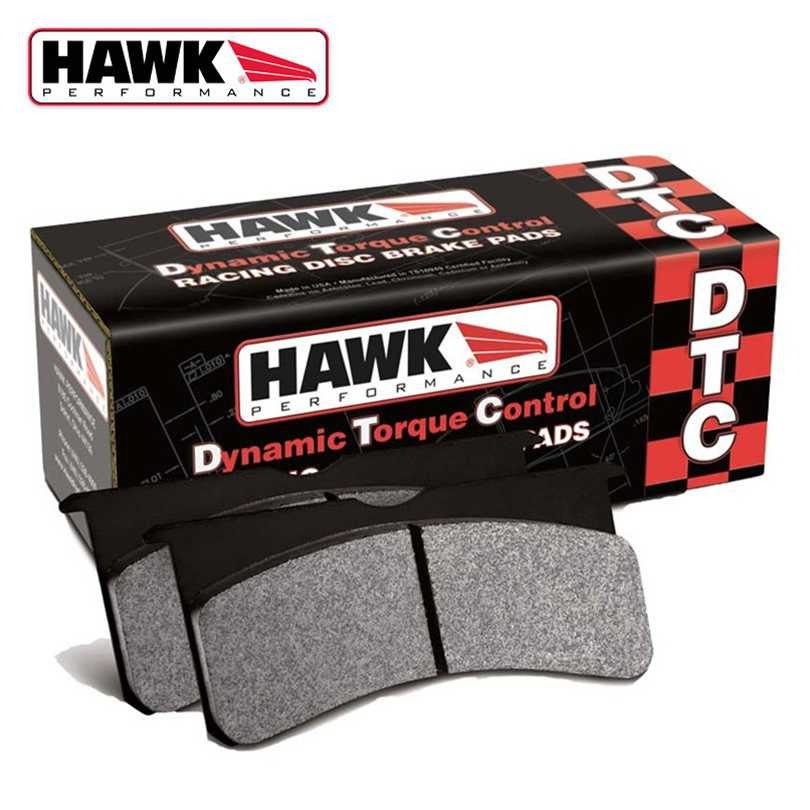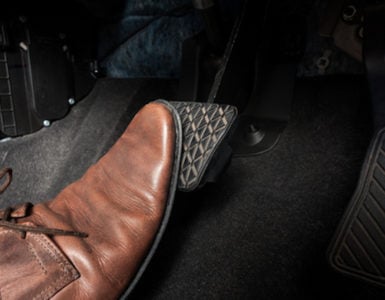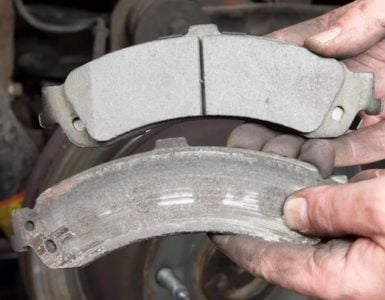There are typically five sub-units in a singular disc system package:
1 – the disc rotor
2 – a caliper assembly
3 – brake pads of varying size and material types
4 – caliper housing
5 – wheel hub
Let’s also count wheel studs since they provide a way to attach a wheel and tire combination to the car’s axle/ suspension system.
For this article, let’s focus on brake pads since that is where the “caliper hits the rotor.”
What Are Brake Pads Anyway?
Brake pads serve are the primary friction contact point between the brake system’s hydraulic caliper and the brake rotor as it spins on the wheel hub. As a dynamic process, pads create direct friction that slows then stops the rotor while translating that force into thermal energy.
Today’s systems employ two pads per caliper. (A little more about calipers here.) Although, in some specialized cases like heavy-duty brake systems for industrial use, additional brake pads are involved.
Typical Brake Pad Materials
There are four common types of materials involved in the use of today’s brake pads. These types include:
Non-metallic brake pads – These products are designed to combine various composite sub-materials including cellulose (a green plant derivative), Aramid (synthetic fibers with a lot of strength when grouped together), and fritted glass (glass particles that allow gas derivatives to pass).
Semi-metallic brake pads – These are typically made of hybridized copper, iron, and/or steel equaling 30% to 65% of an entire pad’s surface. The rest of the pad structure involves a range of sub-materials needed to establish reliability.
Fully-metallic brake pads – These products are typically considered race-only and only useful in the case of high-dependability, high-heat applications. These pads are constructed using metal-only processes, leveraging a fritted design similar to gas-out processes that relate to non-metallic pads.
Ceramic brake pads – These pads are considered to be the most sophisticated of today’s brake pad variants. They are comprised of porcelain and clay. While they are typically considered to the quietest of all pad types, they are expensive. They are rarely found on consumer vehicles and only show up on the most expensive vehicle brands.
What types of brake pad brands are available on BuyBrakes.com?
Signs That You Need Brake Pad Maintenance
Squealing during braking – This occurs when pad depth becomes so thin that contact between the caliper housing and the rotor itself can occur.
Uneven braking – This is a consequence of uneven pad wear. This occurs when one brake is reaching optimum contact pad pressure on the rotor, while another doesn’t.
Pedal play – Another way to announce that your brake pads need tending relates to pedal length. The longer the pedal, the thinner the pad depth. .
Grinding sounds during braking – This represents one of the most common of all tale-tells and occurs when the disc caliper comes in direct contact with the rotor. If you hear this sound, you should respond immediately.
Brake pedal vibration – Similar to the issue of pedal play, vibration during the braking evolution suggests a requirement to replace your brake pads. You can read more about how to replace brake pads on our blog.
Some premier brands install pad sensors at each brake system. When the pad depth reaches minimum depth, the sensor triggers a dash alarm and that means brake pad maintenance is necessary.
Of course, if you feel your brake pads are beyond repair, we strongly recommend you purchase a new set of brake pads. You can read more about the cost of replacing brake pads, as well as a number of other helpful tips, on our blog.





